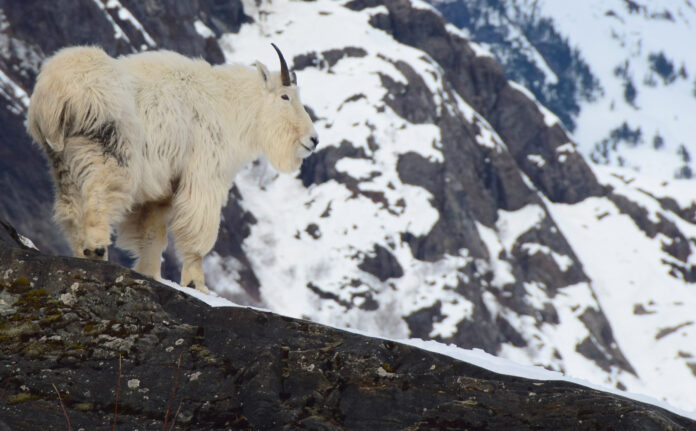Snowy, mountainous terrains can help mountain goats evade predators — but according to a new study, this benefit comes at a significant price. The study found that avalanches are a leading cause of death for these alpine mammals, with up to 22% of the population killed by avalanches in a single year.
The research was led by Kevin White, a wildlife ecologist and PhD candidate at the University of Victoria and University of Alaska Southeast, and published in Nature Communications Biology.
Mountain goats have adapted to life in steep, rugged terrains as a way to avoid predators such as wolves and other large carnivorous species. Yet these steep slopes are often the sites of devastating avalanches which can have profound impacts on mountain goat populations.
Using data that had been collected over the course of 17 years in coastal Alaska, the team behind the study uncovered just how much of a risk these avalanches pose. The data came from 400 satellite tagged mountain goats in four separate populations.
By tracking these mountain goats through avalanche events, and examining the mountains afterwards, the researchers found that a staggering 1/3 of all deaths in the populations were caused by avalanches. What’s more, these deaths affected goats of all ages similarly. This is in contrast to deaths due to predators, which might primarily result in the loss of older, weaker members of the population. When it came to avalanches, the researchers found that 61% of the goats killed were reproductively important, prime-aged individuals.
Yet as the researchers go on to explain, these natural disasters aren’t entirely bad news for mountain goat populations. For example, avalanches can provide new sources of food by exposing vegetation buried beneath the snow.
“Avalanches transform mountain landscapes in major ways that can be both beneficial and deleterious,” White said in a press release.
“Our study provides the first detailed evidence of the latter, namely the striking impact avalanches can have on mountain wildlife population demography — with up to 22% of individuals killed by avalanches in a single year.”
Our changing climate means that the prevalence and characteristics of avalanches in these habitats may change in the coming years. As demonstrated by the present study, this could have profound impacts on mountain goat populations.








































